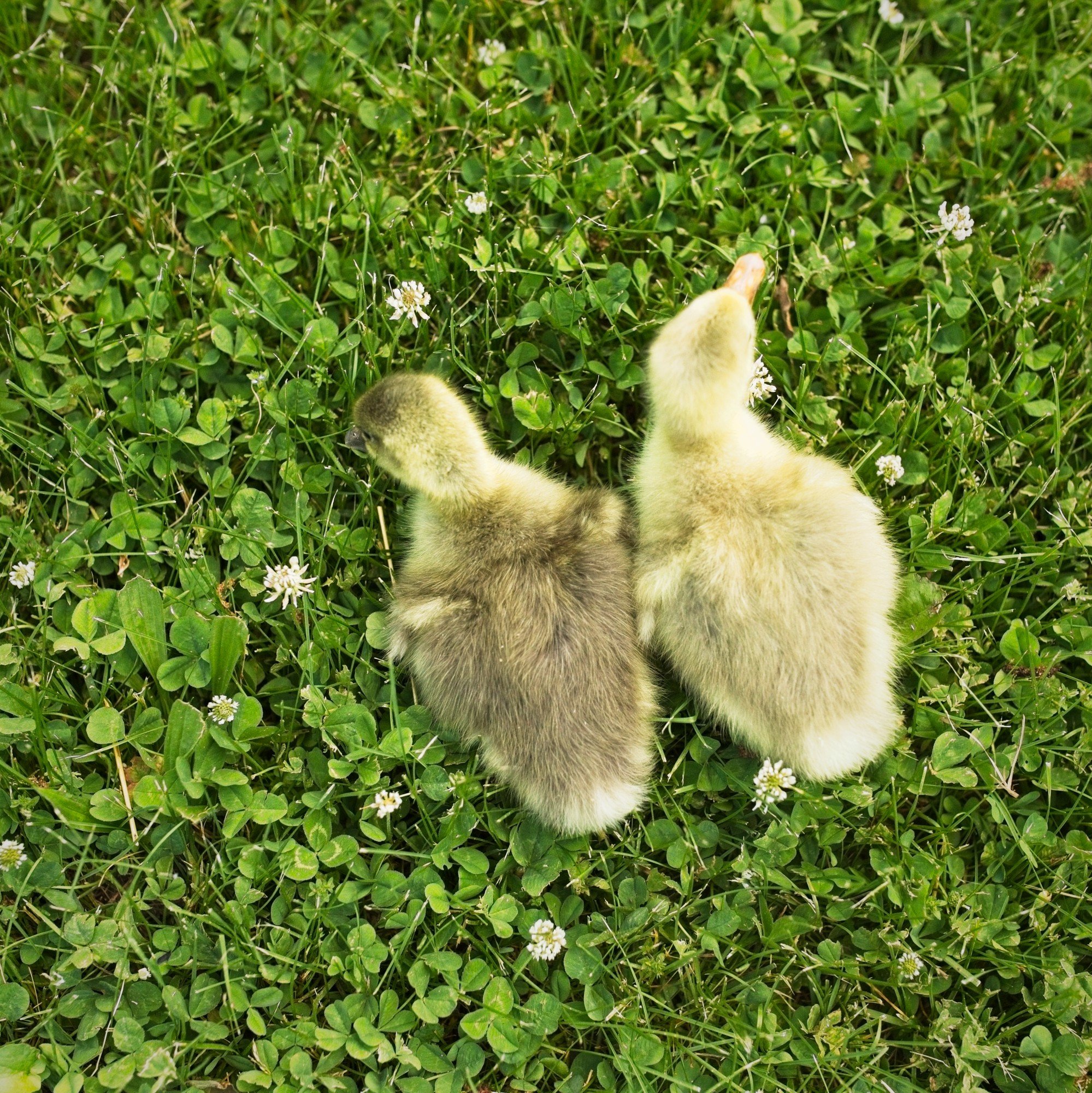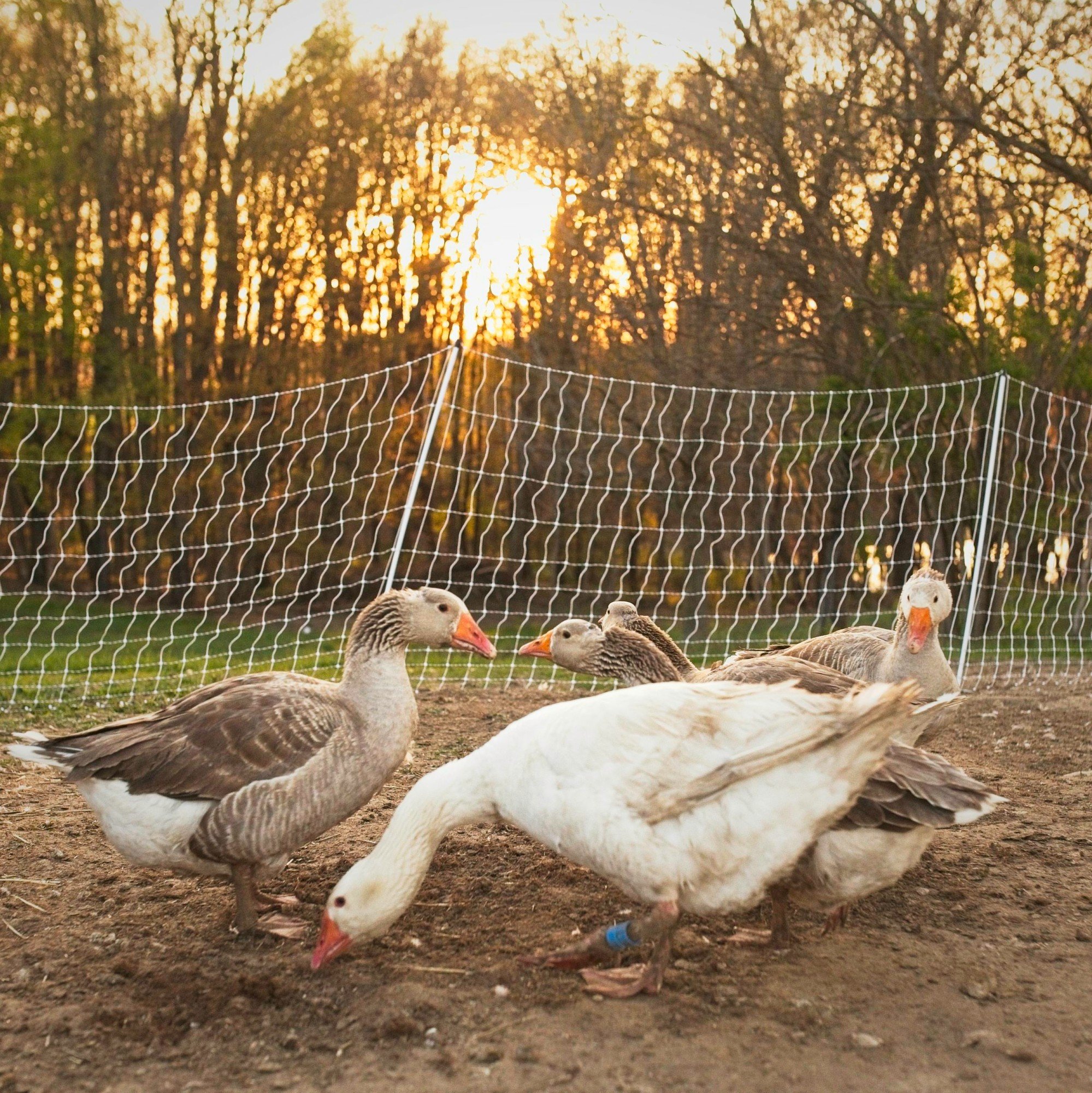How We Raise Pilgrim Geese Part 1: Why this breed, What we feed and How we house and fence them.
Want to be the first to know when we have Pilgrim Goslings in the Spring?
We raise Pilgrim Geese for our own meat and we also sell single goslings and mating pair goslings in the spring. We have been raising geese since 2016 and along the way we have learned a lot. There was not a lot of information easily available online about raising geese when we started so we learned most everything on a whim and as we went. I think it would be helpful to have a collection of what we have learned along the way and hopefully it will allow others to skip a bit of the learning curve.
In this post we are going to cover….
Why did we choose the Pilgrim Geese breed?
How do we house our Pilgrim Geese?
How do we fence our Pilgrim Geese during the growing seasons (March-November)?
How do we house and fence our Pilgrim Geese in winter?
What do we feed our Pilgrim Geese?
How can we feed our geese less grain?
Why did we choose the Pilgrim Geese breed?
We choose Pilgrim Geese for several reasons. First they are a medium size breed which makes breeding easier for them and also makes them easier on our plucker when we butcher. Second, they are a more gentle breed that are oftentimes less noisy than other breeds. Lastly but no least and actually the main reason we choose Pilgrim geese is because they are sex-linked for color. That allows sexing them at any age easier but most importantly when they are young goslings. The male geese have a lighter bill and more yellow at hatch while the females have darker bill and more gray at hatch. It is much easier to tell them apart when you have a male and female next to each other when you are first starting out.
My first hatch I was panicking because I could not tell which of the first three goslings were males or females!!! I just thought this is still not easy but once the fourth one hatched I could immediately tell that she was much darker than the other three. It just so happens that the first three were males and that is why they all looked alike.
How do we house our Pilgrim Geese?
At this time we have several mating groups that range from pairs (one male and two females) up to quads (one male and three females) that we house separately during the mating season to ensure the offspring are unrelated. Each group is housed and locked in nightly, in a 6 foot by 6 foot a-frame coop that sits on the ground. We house any animal that can be ‘herded’ around in coops that sit on the ground. That currently includes ducks, turkeys, and geese. Our geese are let out of their coop each morning to forage.
How do we fence our Pilgrim Geese during the growing seasons (March-November)?
During the growing season we fence our geese with electric netting from Premier One Supplies.The fences are anywhere from 100 feet to 164 feet. Their areas are usually 40 feet by 40 feet and we try to set them up in as close to a square as possible. We charge the netting using the Intellishock 60 or 120, also from Premier One Supplies. These energizers are solar powered making moving the geese around fairly simple.
During the mating season and when the females are on nests we are not able to move the coops but we still try and move the netting to new forage. If you move the coops too much during the female's laying period it can rattle her and suspend her laying for a couple of days to a week.
How do we house and fence our Pilgrim Geese in winter?
During the winter the geese are in a stationary set up that is bedded with straw. Some geese live in the greenhouse with the ducks and chickens and some live in the lean-to with the goats. We are trying to get away from housing them in the greenhouse because the geese rip the greenhouse plastic up every single year! We mostly block the geese 'access to the plastic by using wood pallets in front of the plastic but they still rip parts up every winter.
We try to have them out of sight of each other and a few fences away as well because the ganders will fight through the fences. The greater this distance the better the females will stay with that particular gander as well. Every now and again a female will decide she likes a different gander more and wants to switch. We have housed them sharing a fence line and the ganders will not fight the entire time but they will fight through the fences at some point during the mating season.
What do we feed our Pilgrim Geese?
The main thing we feed our geese during the growing season is grass. We try to move our geese as often as possible so they are growing or maintaining weight on the least amount of grain as possible and relying more on grass. The second thing we feed our geese is unmedicated organic poultry feed. I have not needed to add additional niacin with my geese like most do with ducklings with the feed I use.
If we are raising the Geese for meat we start them at 20-22% protein feed usually called Chick Grower, for the first 2-4 weeks and then raise them on 18% protein feed until butcher age which is about 18-20 weeks. If we can only find 22% then we only feed that for 2 weeks and then move to the 18% until butcher. If we can only find 20% then we feed that for 4 weeks and switch to 18% until butcher. The above feeding is a recommendation for the best carcass size that we have experienced. We also have just done 18% the whole time and they were smaller at 18-20 weeks so they would need to be grown out a bit longer.
If we are raising them to be future breeders we usually just do 18% the whole time and will lower their protein after they reach about 18 weeks old. They will do just fine on 16% protein feed when they are full grown.
There is one reason to error on the side of less protein and that would be an ailment called Angel Wing. Some goslings pin feathers will develop rather quickly compared to their wing strength which will cause the wing to tilt outwards looking somewhat like the wing of an angel. Some people swear feeding a gosling too high or too much protein will cause this to happen but I have rarely experienced it. I wonder if this is because we get our goslings on grass and pasture gaining strength in their wings and balancing out the amount of protein. At this point I have raised well over 150 goslings and have only had two goslings develop angel wings.
During the winter they are oftentimes fed 16% layer to make sure they are getting the necessary calcium for the shells during laying season. But we have also fed them 18% and just had calcium free choice in a container as well. Sometimes feeding them the layer feed seems to make the shells really hard though and that can effect the moisture loss and total hatch rate during incubations.
The higher the protein in the feed the faster their growth can be and it can also increase the number of eggs they lay in the spring. We range from 1/3lb -1/2lb of feed per day per goose depending on the season (grass or no grass), purpose of the goose (meat or breeding) and also the age of the goose.
How can we feed our geese less grain and save money on feed?
During the growing season we try very hard to move the geese to new forage weekly. During a move we set up a new foraging area that we call a paddock, with the electric netting, then move the coops to the new paddock, and give fresh food and water. The more grass they eat the less grain they will eat. We also soak their feed at least over night and sometimes 24 hours. By soaking their feed in water you allow the water to break down the phytic acid in the feed making it more digestable for the goose.
We had two groups of geese this growing season that we called the Rouge Groups and they hardly ate any grain because they were foraging our whole property. We don't really like that set up though because they also love our driveway and poop all over our boys basketball court and the front porch. So we got them back in a netting mid summer so we no longer had to check the inside of our shoes for goose poop!
That wraps up the first part of how we raise Pilgrim Geese. In my next post I will be talking about how many geese should you get? And should you get males, females or a mating pair? Should you have more than one mating group of geese?









